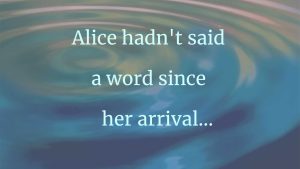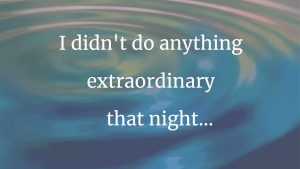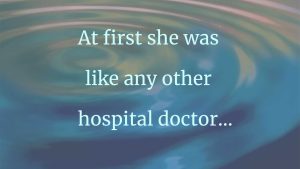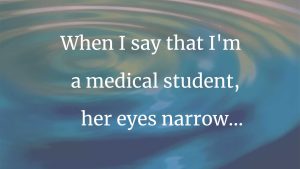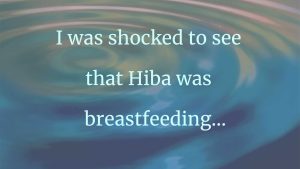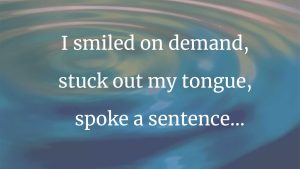Editor’s Note: Hurricane Sandy hit New York, Pulse‘s home, on Monday, October 29. Eleven days later, many parts of our area are still limping toward recovery. Today we bring you two stories, rather than the usual one, about the hurricane’s impact. The first is by a medical student who was suddenly thrust closer to his newly adopted city. The second is an e-mail written to a colleague by a family physician who volunteered time in a City shelter.
|
New York Welcomes You
Paul Lapis
|
Just three short months ago, I took my first steps into the medical world when I put on my white coat and began my first day as a student at the NYU School of Medicine.
A lifelong Californian, I’d always dreamed of coming to New York. I was delighted to know that I’d be spending my next four years in the city.
Despite my short time here, I can honestly say I love New York. This city has always stood as a symbol of everything I’ve come to value. I especially love the rich cultural and ethnic diversity of the people who live here–and, amid their endless and beautiful diversity, the underlying unity that connects them.
Little things like New Yorkers’ slowing down their hurried pace to help someone find his way to a destination, or more complex moments like the way people came together after the devastating events of 9/11–for me, these represent some of New York City’s greatest qualities.
Simply put, I was proud to become a New Yorker.
Before I left San Jose, my friends and family had jokingly warned about the dramatic climate shift I’d face in NYC.
“So it gets colder and snows–how different can it be?” was my default reply.
I was soon to find out.
In the days before Hurricane Sandy hit, as the forecasters issued their warnings, I rounded up batteries for my flashlight and purchased a bit more nonperishable foods than usual. But my preparations were limited. I believed that my apartment building, located in the East Twenties directly across the street from Bellevue Hospital, would have no problems with the oncoming storm.
After all, we’re only in Hurricane Evacuation Zone C, I thought. It’s Zone A that’s the area of concern.
On Monday evening, October 29, at the storm’s peak, everything felt completely normal: There was no rain, the power was on, and I sat in my nineteenth-floor apartment, studying hard for my upcoming virology exam.
Suddenly things took a drastically different turn.
The lights went out. The normal background hum of electronics in the apartment died abruptly.
I looked out my window. The entire downtown area was pitch-black. Flashlights strobed through the apartment windows across the street. My first reaction was relief: now I had an excuse to skip out on studying for the rest of the evening.
Grabbing my flashlight, I went outside to take a closer look at the situation.
I walked down First Avenue through the howling wind. At first walking was no problem, but soon the rising storm forced me to hug the buildings’ walls. I tried to look down First Avenue, but the flying debris, including an entire newsstand getting blown about, made me think better of it. Except for the wind and the crash of ocean waves nearby, the city was eerily quiet.
More eerie still was the sight of the VA hospital across the street–a blue fire alarm blinking in each darkened room instead of the usual warm lighting. Standing there in the empty darkness, I started to feel uneasy.
I took out my phone, checking my class’s communication page for news.
“They’re asking for med students to come to the lobby of NYU Tisch Hospital with flashlights. Tisch is losing power in fifteen minutes, and they’re still evacuating patients,” a student posted.
Adrenaline surging, I went back to the apartment and met up with some classmates. We hurried the six blocks to the hospital.
My first glimpse of the hospital lobby did little to calm me. Police and firefighters, hospital staff, medical professors and students bustled here and there, trying to organize themselves.
“Someone called for people with flashlights?” I asked a man wearing an NYU badge.
“The backup generators failed, and the whole building is about to lose power,” he said. “The elevators aren’t working. We need anyone who has a flashlight to go upstairs and help bring the patients downstairs.”
I found two other students, and we began to climb the stairs to the fifteenth floor. The cold concrete stairwell was narrow and darkened; at each landing a volunteer or police officer stood, holding a flashlight.
On our way up, we passed through clusters of doctors, nurses, police and firefighters, all trying to coordinate the patients’ descent.
“Patient coming down!” they yelled.
To make room, I ducked through the nearest exit and onto the sixth floor as a line of nurses and doctors trooped downstairs, some carrying infants in their arms, others carrying medical equipment or manually ventilating the patients.
I couldn’t believe what I was seeing. Just a half-hour earlier, I’d been calmly flipping through my text books. Now here I was in the midst of a full-blown emergency.
My team didn’t reach the fifteenth floor. Instead, we took over for volunteers who needed to be relieved or had other tasks to carry out. I quickly found myself at the head of a patient’s transport sled.
When our patient’s turn came, I took up one end of the plastic sled and helped to painstakingly take him down what felt like countless stairs to the line of ambulances outside. Then we turned around, climbed back up the stairs, and did it all again. Soon my legs were burning, and I was drenched in sweat.
Yet with every ascent or descent, I felt more energized–because I saw more and more volunteers joining us all the time. I saw almost my entire first-year class there.
I feel profoundly affected by what I witnessed that night.
Over and over, I saw people show caring, warmth and compassion amid commotion and stress. Students and nurses would ask the patients, “How are you doing? Are you okay?” as they carried them down. Firefighters and paramedics, seeing a volunteer’s fatigue, said, “Would you like to take a break? I can take your spot if you need rest.”
I witnessed my classmates’ sacrifice and hard work: Some of them stayed for more than twenty-four hours, until every last patient had been safely evacuated.
I saw a team of people of all different backgrounds–doctors, nurses, first responders, hospital staff and volunteers–come together with a single mission: to help one another and save lives.
At some point that night, I realized, This is where I’m meant to be.
Hurricane Sandy’s devastating effects are still taking a heavy toll on many people. But I take solace in seeing how, when the situation calls for a helping hand, the human spirit rises to meet the challenge.
I feel proud of my newly adopted city for marshaling its forces in the service of the greater good, and proud of my colleagues for stepping up to help in this time of need.
I consider that night an initiation into my lifelong calling to do just that.
About the author:
Paul Lapis is a first-year medical student at the NYU School of Medicine. Prior to moving to New York, he attended the University of California, Irvine, where he studied neurobiology. “I became interested in writing when my high-school English teacher showed me how bad I was at it and forced me to really think about how and what I wrote. Since then, I’ve found writing a tremendously useful tool for reflection, and the process of writing itself very relaxing.”

